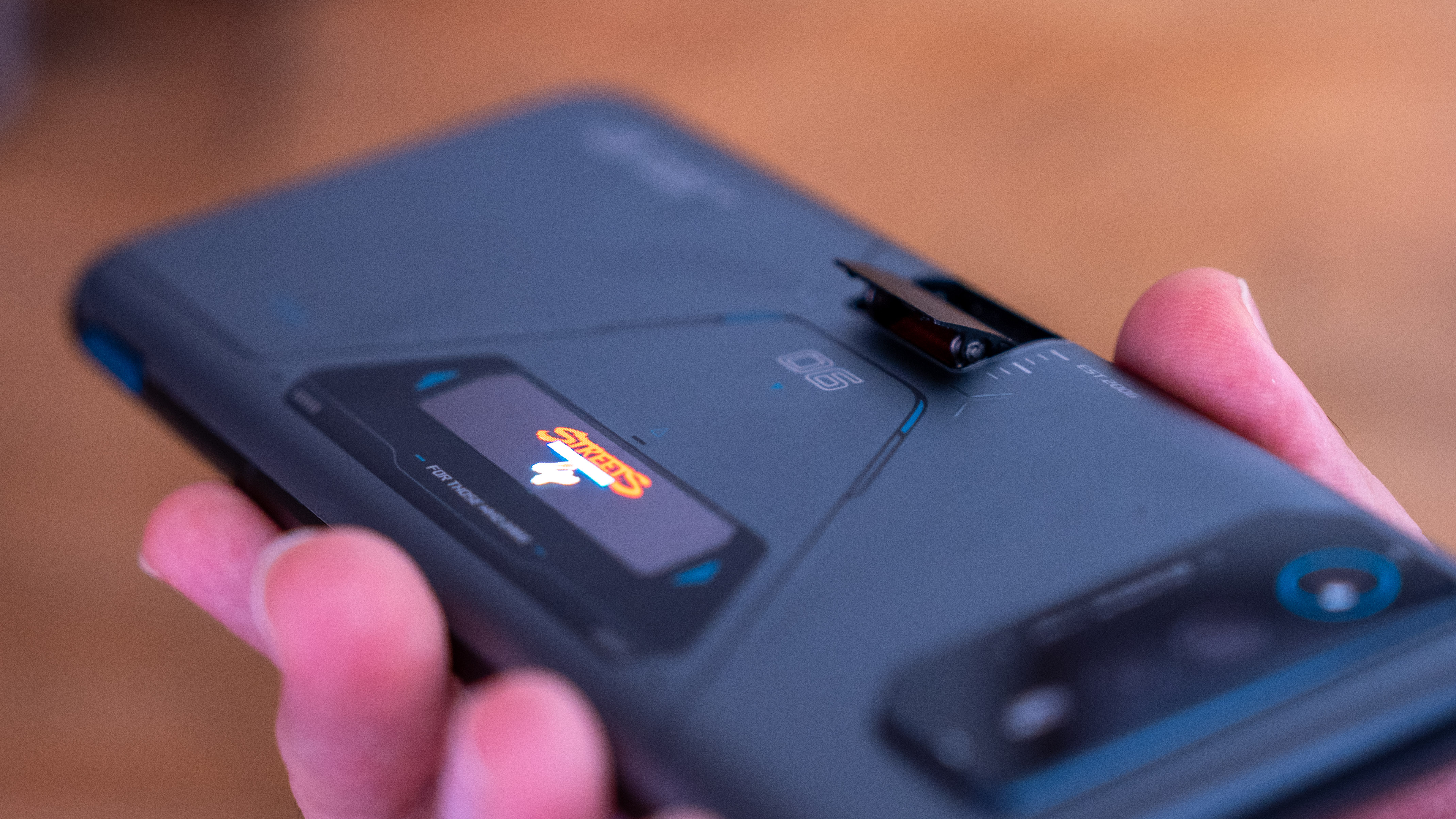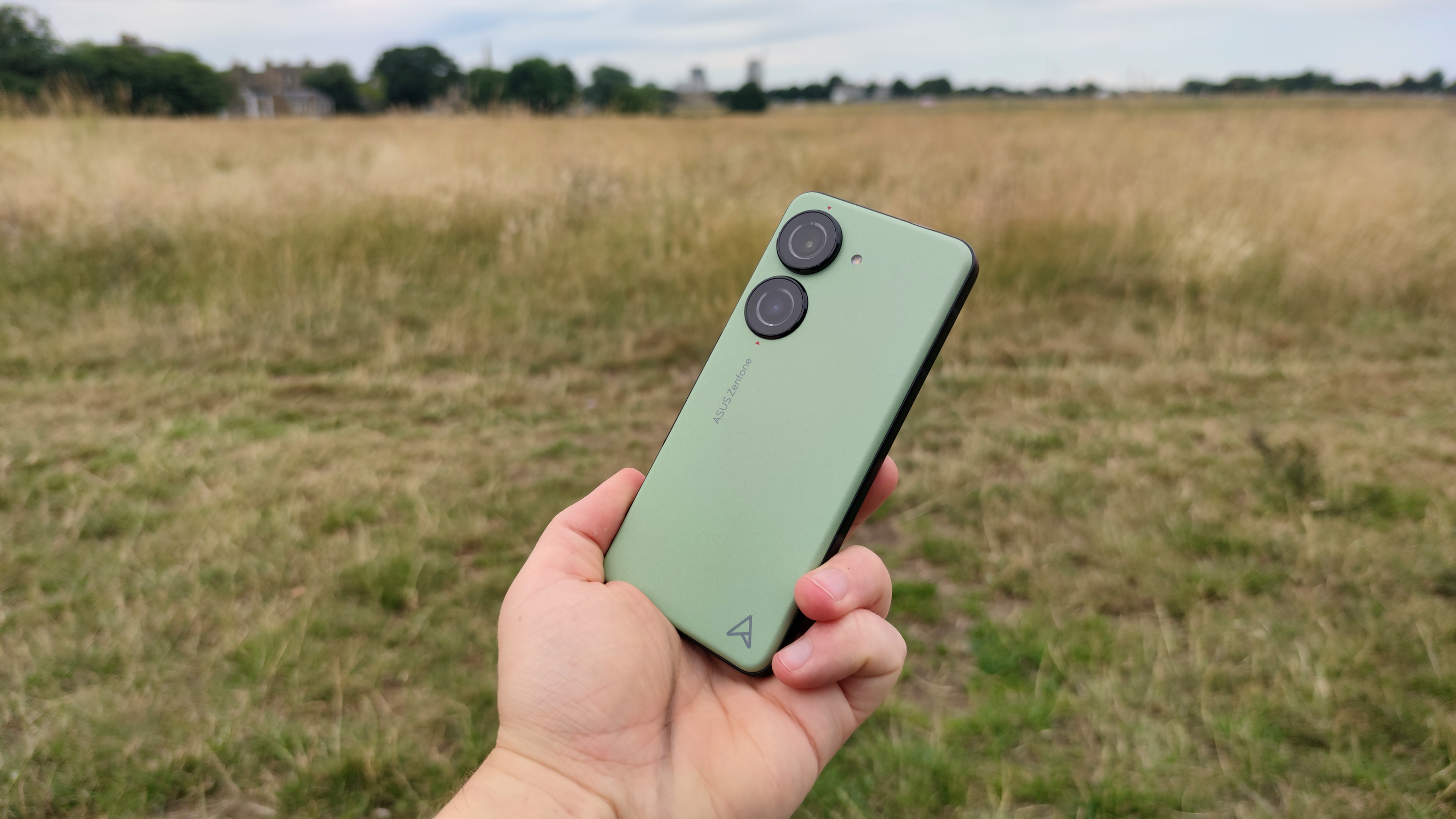The Asus ROG Phone 8 reveal proves that gaming phones' days are numbered
Game over for the gaming phone?

Asus' ROG Phone series has established itself as the GOAT, as far as the best gaming phones are concerned, consistently landing the top spot on our shortlist, with each new iteration doubling down on standout features that serious mobile gamers will unquestionably love. With the newly-announed ROG Phone 8 line, however, gaming no longer feels like the priority, in fact, Asus outright states that it isn't.
There are a few established traits and tropes that help define a great gaming phone: a large, sharp display with a high refresh rate, solid sound – ideally through both stereo speakers and headphones (bonus points for a physical headphone jack); great cooling – in particular active cooling, through the use of fans, vents and a large vapor chamber; physical controls – this typically manifests as capacitive shoulder buttons; a large battery; dedicated software to manage notifications; device performance, and of course, heaps of power.

It's also understood that as part of striking a balance that prioritizes gaming, you have to expect some compromises too; mainly to areas like camera quality, physical dimensions and weight. These are accepted shortcomings that allow for more focused investment on a device's gaming prowess.
Breaking its own rules
At an embargoed briefing, ahead of the ROG Phone 8's unveiling at CES 2024, the company ran through the storied history of the series, with the first three models (which it considers to collectively be the line's first generation) helping define what it is to be an Asus gaming phone, followed by the second-generation ROG Phones 5, 6 and 7 (there was no ROG Phone 4), whose focus was on refining the series' now-established defining qualities: speed, cooling, X Mode (the company's proprietary gaming software), battery, tuning, audio and design.
Doesn't "beyond gaming" sound like another way of saying 'things other than gaming'?
We then reach the ROG Phone 8, the first of Asus' third generation of ROG Phone – an entry whose tag line is intriguingly "beyond gaming."
Call me a cynic but doesn't "beyond gaming" sound like another way of saying 'things other than gaming'?
It's a cool slogan in a vacuum, but when you look at what the ROG Phone 8 actually brings to the table – in particular the ROG Phone 8 Pro – it doesn't simply build on the established formula of its forebares.
Sign up for breaking news, reviews, opinion, top tech deals, and more.
Asus has instead chosen to strip away some of the defining aspects of the series to make its new gaming champ less about gaming and more about... everything else.
The phone still has the latest Snapdragon 8 Gen 3 chipset – ensuring plenty of power, an E6 AMOLED display with up to a 165Hz refresh rate, AirTrigger shoulder buttons and a graphite sheet paired to a revised heat sink – as part of its new GameCool 8 system.
However, the outlandish AeroActive Portal of the last few generations – a motorized vent, that opened up to work in conjunction with the AeroActive Cooler 7 (a detachable fan accessory that clipped onto the phone's back) has gone. In its place the new AeroActive Cooler X misses out on the integrated subwoofer, as well as two of the four shoulder buttons its predecessor added.

By nixing series-defining traits, like the vent system and reducing battery capacity, Asus has instead been able to build a slimmer, lighter ROG Phone with narrower bezels around the same-sized display as the ROG Phone 7, added wireless charging, and more substantial IP68-certified dust and water resistance too.
All welcome improvements, but ones that seemingly detract from Asus' own definition of what a gaming phone is meant to be. These all feel like improvements you'd more readily find on a conventional flagship, looking for the broadest appeal possible.
Is the Zenfone to blame?
Perhaps it's the Zenfone's fault. With the Zenfone 8 series, Asus moved towards a smaller form factor for its mainstream flagship phone, carving out a niche as the go-to small Android flagship phone-maker but creating a void in its portfolio as a result. For those after a more conventionally-sized competitor to the iPhone Pro Max and Galaxy Ultra-sized alternatives dominating the market, there suddenly wasn't anything Asus offered.

The ROG Phone was the right size, but until now wasn't a balanced enough device to step into that gap. With the changes made for the release of the ROG Phone 8 line – including a far bigger focus on camera quality and camera performance – it would appear that the company's gaming phone series is now taking that very step; now serving as its new mainstream flagship device.
The game has changed
There's also today's wider playing field to consider. As detailed by Visual Capitalist, the revenue generated by mobile gaming now eclipses that of more traditional platforms; including PC and console gaming combined. That blood in the water has attracted the sharks, which means a far more competitive mobile gaming scene than that of the ROG Phone series' debut.
Now, companies like Sony, Samsung and even Google bundle self-made gaming overlays on their mainstream flagship phones – devices that are marketed to support gaming, but not explicitly for gaming. At the same time, you now have Apple shouting about the gaming credentials of the iPhone 15 Pro Max too, with its ray tracing-capable A17 Pro chipset and exclusive console-quality ports of titles like Resident Evil Village.

More widely available gaming-capable smartphones and cloud gaming have also helped invigorate the gaming accessory market, with mobile game controllers like the Backbone One and the GameSir G8 Galileo further legitimizing mobile gaming in turn. Even Asus' own Tessen mobile controller – which was announced alongside the ROG Phone 8 – is the first of the company's mobile gaming controllers that isn't exclusively compatible with a ROG Phone, but is instead designed to work with most USB-C toting phones out there.
Coming from what was once the name in gaming phone pedigree, the Asus ROG Phone 8 looks more like just another excellent flagship phone in a crowd of excellent flagship phones. Not so much game over, but the end of an era.

Alex joined as TechRadar's Senior Phones Editor in June 2022, but brings over a decade's worth of experience to the role, with an expertise in smartphones, tablets and wearables. He's covered keynotes hosted by the biggest brands and attended the launches for some of the most influential mobile products of the last few years. His experience was amassed at some of the most reputable consumer technology publications out there, including GSMArena, TechAdvisor and Trusted Reviews.
